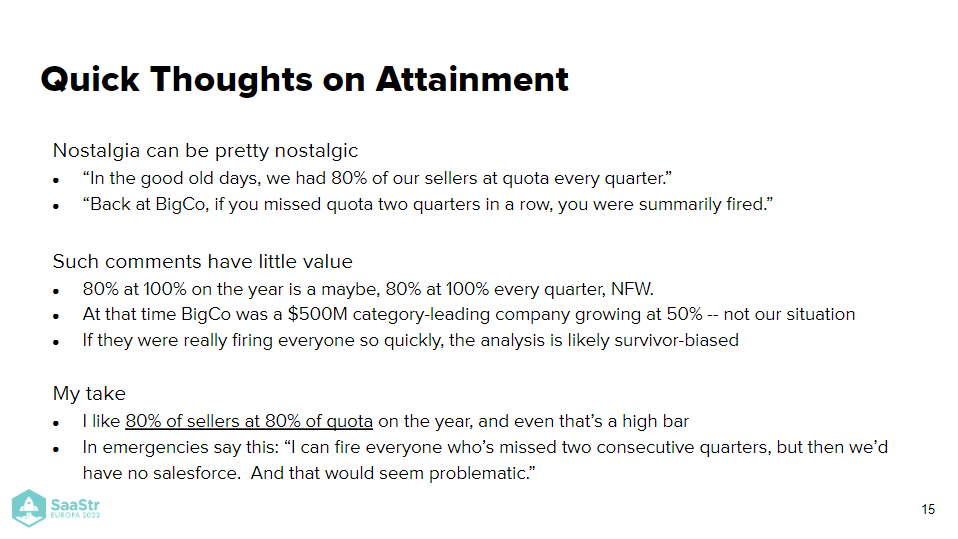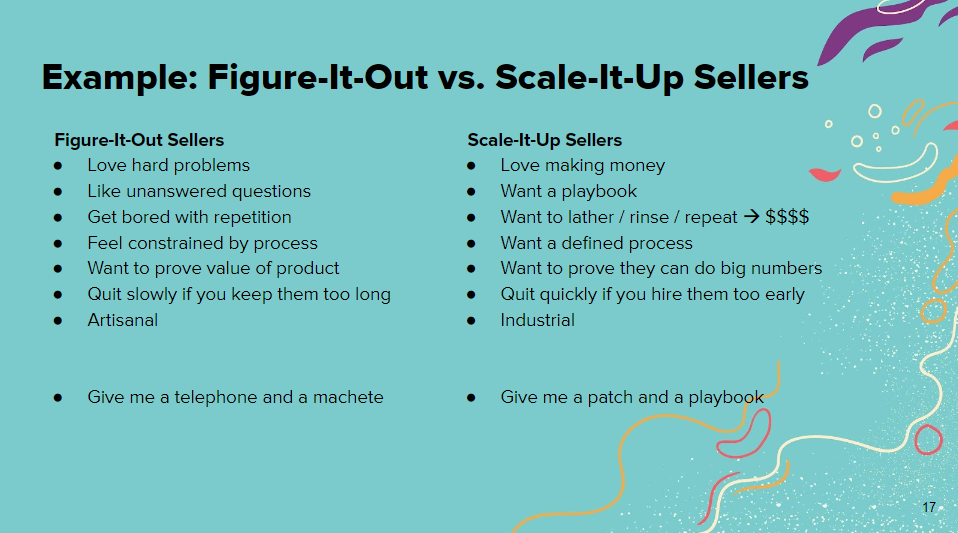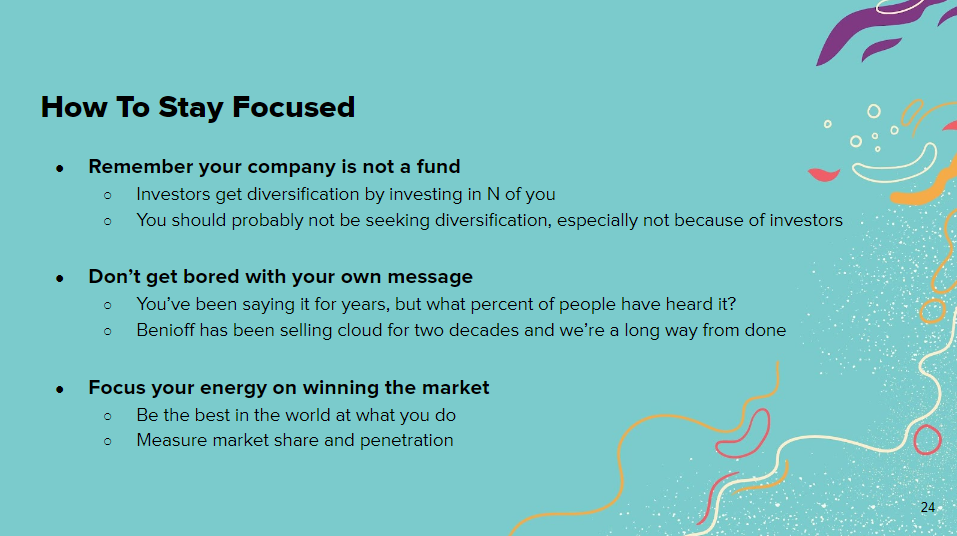As start-ups begin to accumulate success and generate momentum, they will inevitably need to scale up. The conditions at which this desire begins are pretty predictable. A company has sold from $2 million to $10 million in ARR and wants to keep growing. You’ve identified a persona to sell to and a problem you solve for buyers. Or, perhaps, you’ve secured a new round of funding and want to live up to the hype. For whatever reason, the company is ready to exit startup status and prepare to scale-up.
Dave Kellogg, Executive-In-Residence at Balderton Capital, breaks down the most common mistakes companies make when going from startup to scale-up. He helps showcase these errors and advises on how to stop them from crippling a business’s growth.
You can see Dave’s slides here.
Mistake #1: Premature GTM acceleration
“This is by far the top scale-up mistake that companies make. You see some success, but you now have pressure to continue delivering. You hope you can repeat the early success, but you’re not sure.”
Accelerating on a go to market expansion too rapidly can cripple a business’s momentum. Often, with greater expectations and/or pressure (from investors, great publicity, a Board of Directors, etc.), a company will hire rapidly to achieve scale. Executives think that hiring new contributors is necessary to hit plan numbers.
The problem here is that without confidence and assurance that you can repeat your early success, you may set up your new hires for failure. Lacking these models for repeatability, these new sales leaders and hires struggle to hit quota. The consequences are many: money burned on acquiring talent, loss of investor confidence, wounded founder/CEO ego, reduced employee morale, and more.
How can founders and executive leaders avoid falling victim to the pitfalls of premature go-to-market acceleration? Here are a few ways:
- Define what repeatability looks like for your business. Come up with a list of standard inputs (i.e., profile/background, hiring criteria, onboarding) and then apply a standard process (tools and ongoing training, sales process and methodology) that leads to a standard output (productivity and attainment).
- Be realistic in self-assessment. Don’t be blinded by only the most optimistic outlooks. Question your rosy projections. Your advisors and Board can help with this.
- Hire according to empirical indicators, not the financing plan. Hire because you think your new team will be productive, not because you need them to hit a plan number.

Mistake #2: People in the wrong roles
As scaling beyond early success begins, leaders must think about whether they still have people in the right roles for the future of the company.
“There are two types of people driving companies. The people who got you from $0M to $10M are figure-it out-people. The people you need from $10M to $100M are scale-it-up people.”
To get a startup off the ground, company operators thrive with those who can figure anything out. These creative types can take the proverbial phone book and a hammer and figure out how to reel in business. But operators need to be mindful that scaling a business requires precise excellence of a different kind. When scaling up, dedication to a defined playbook can be more important than creative ingenuity.
It’s a hard balance to strike, but knowing that you have people in the right roles is crucial to scaled success. Loyalty is important, but winning is the goal. Make sure you build a team with a mix of veterans and up-and-comers that can help continue to push the ship forward.
Mistake #3: Losing focus
As your business grows, stakeholders and your investment team will want to generate ideas to help you succeed. They’re not trying to drive you off course; they’re trying to be helpful. But the result can be a loss of focus.
“Remember that your company is not a fund like your investors may have. Diversification is their problem, not yours.”
Don’t get bored with your own message. Focus your energy on winning your addressable market. Be the best at what you do.

Mistake #4: Messing up geographical expansion
As scaling occurs, the question of expanding beyond your initial selling borders will naturally come up. However, a couple of errors can occur when considering expansion.
First is simply delaying expansion due to the anxiety of crossing a new threshold. Other mistakes revolve around failing to adapt to the new conditions. Make sure to adapt structure and process as you expand and account for the importance of sales and marketing in each new market.
Mistake #5: Accumulating debilitating technical debt
On average, companies that went public in 2021 had existed for eleven years. Over a decade is a long time for technical debt to accrue while focusing on scale.
“Ignore technical debt at your own peril.”
Manage the technical debt that accrues over time, or your competitors will pounce on these oversights. Hire and empower strong architects who manage technological lags, separate from a VP of engineering’s concerns. Try to employ trust releases sporadically in your product release cycles to be aware of outstanding technical issues.

Key Takeaways
Scaling an organization’s growth can be empowering and exciting, but each company that has had initial success risks setting themselves back by making errors while scaling.
Here are some lessons to avoid making the most common scale-up mistakes:
- Define what repeatability looks like for your organization. Set yourself up for success so that you know what success is. Don’t simply hire and hope for continued growth. Know what the growth looks like and put the right people in their right seats.
- Stay focused on what you are the best at. Be the best at what you do, and don’t lose focus on where you win.
- Stay organized, and don’t let technical debt or stagnancy occur. The road to sustained success is often long, not immediate. Continue prioritizing operational efficiency.


